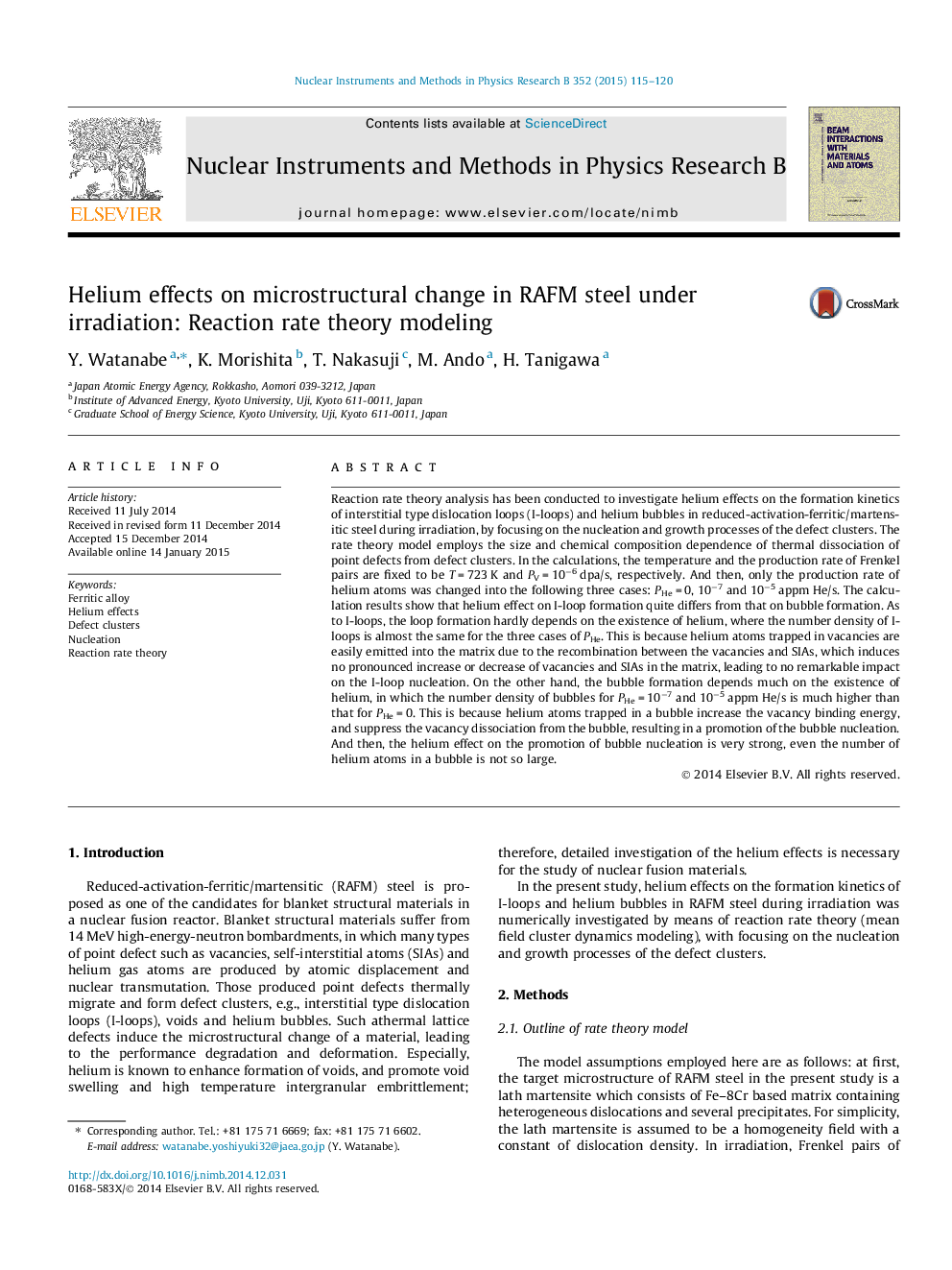| کد مقاله | کد نشریه | سال انتشار | مقاله انگلیسی | نسخه تمام متن |
|---|---|---|---|---|
| 1680518 | 1518667 | 2015 | 6 صفحه PDF | دانلود رایگان |

Reaction rate theory analysis has been conducted to investigate helium effects on the formation kinetics of interstitial type dislocation loops (I-loops) and helium bubbles in reduced-activation-ferritic/martensitic steel during irradiation, by focusing on the nucleation and growth processes of the defect clusters. The rate theory model employs the size and chemical composition dependence of thermal dissociation of point defects from defect clusters. In the calculations, the temperature and the production rate of Frenkel pairs are fixed to be T = 723 K and PV = 10−6 dpa/s, respectively. And then, only the production rate of helium atoms was changed into the following three cases: PHe = 0, 10−7 and 10−5 appm He/s. The calculation results show that helium effect on I-loop formation quite differs from that on bubble formation. As to I-loops, the loop formation hardly depends on the existence of helium, where the number density of I-loops is almost the same for the three cases of PHe. This is because helium atoms trapped in vacancies are easily emitted into the matrix due to the recombination between the vacancies and SIAs, which induces no pronounced increase or decrease of vacancies and SIAs in the matrix, leading to no remarkable impact on the I-loop nucleation. On the other hand, the bubble formation depends much on the existence of helium, in which the number density of bubbles for PHe = 10−7 and 10−5 appm He/s is much higher than that for PHe = 0. This is because helium atoms trapped in a bubble increase the vacancy binding energy, and suppress the vacancy dissociation from the bubble, resulting in a promotion of the bubble nucleation. And then, the helium effect on the promotion of bubble nucleation is very strong, even the number of helium atoms in a bubble is not so large.
Journal: Nuclear Instruments and Methods in Physics Research Section B: Beam Interactions with Materials and Atoms - Volume 352, 1 June 2015, Pages 115–120